What is That Big Orange Spider?

Identifying The Most Common Orange and Black Spider
Fall, in the Eastern US, is a time for my favorite spiders to start showing themselves. I admit a soft spot for orange spiders, because they always signal fall and Halloween to me, a changing of the seasons if you will. So what is the most common orange and black spider you see right now? Most likely you are beginning to notice Araneus marmoreus, or the marbled orb weaver. It's a great name for a rather large and brightly colored spider.
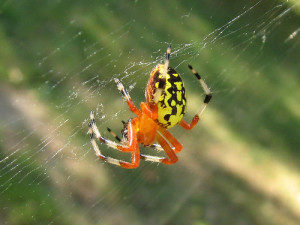
The marbled orb weaver belongs to the genus Araneus, which has over 1,500 members world wide. It's quite a common spider, ranging all across North America, from Northern Canada down to Texas and coast to coast. Even though they are brightly colored THEY ARE NOT VENOMOUS (remember venomous means "injecting venom" and plants and animals are only poisonous if you eat them. Even though I don't recommend this one's diminutive hairy drumsticks it's not poisonous either). If you really don't like picking up spiders, but want to remove them from your house, try the spider grabber, also called the "Critter Catcher" on Amazon.
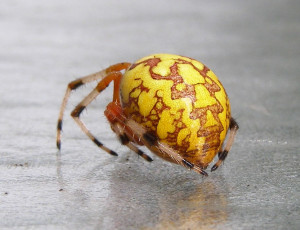
Both males and females of this species have yellowish-orange abdomens (that can run to even a washed out yellow). There are really two color forms, dark orange butts and pale yellow butts with dark blotchy bits near its rear (only in Europe). In both color variants it's the female that is usually most striking, because they're usually 2-3 time the size of the males, and can come in at about small marble size (up to 20 mm), which is horrifying for those that find spiders of any size a bit creepy. When female animals are bigger than males scientists use the fancy term "reverse sexual dimorphism"....why this is easier than "the females are bigger" I have no clue.

Marbled orb weavers can have brown marbling and sometimes spots. A few I've seen even look like they have lacy patterns on their big rumps. Their cephalothorax (sef-a-low-thor-ax, or fused head middle) is orangish with a kind of burnt umber colored hue. It may also have dark lines down the side of its head-middle section.

The legs of marbled orb weavers are the ultimate in Halloween candy-corn patterning, with orange bases, whitish legs and black spotting at the joints and tips. The weaver's eyes are black, and if you look carefully you can see them as they look at you!
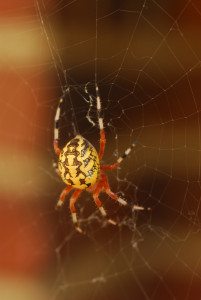
Marbled orb weavers are aptly named, because they weave symmetrically round orb-shaped webs to capture their prey (flies, bugs, and other insects). The largest web I've seen is about tire size in diameter. Marbled orb weavers are usually found in forested areas, and around streams, though we've had one living on our educational dock near the salt marsh for quite some time. Orb weavers will often sit in the middle of their webs, with their legs drawn up, or just lightly resting on the strands of silk. Sometimes they'll hide in the leaf litter near the base of the web, with a leg on the silk strands, waiting for insect vibrations. A lot of articles I've read say they mostly hide at the base of the web, but I have to say that it's my experience that they're fine in the middle, hanging out, just waiting for dinner to fly in.

So what's the deal, why do they appear suddenly from out of nowhere, showing their big orange Halloweeny-rumps and legs right around October? There are quite a few guesses, and I can't say I've heard any good answers other than to suggest that the females lay their eggs in October, and to get ready they chow down on their insect prey, bulking up like a hungry-hungry hippo. Most likely it's all about energy/food sequestration as she's swelling up with eggs. Bad news is, after she lays eggs both she (and the males) dies with the first frost, though her eggs over-winter (in a flat silk cocoon nest) and hatch in early spring. Marbled orb weavers don't live more than 6-7 months total.
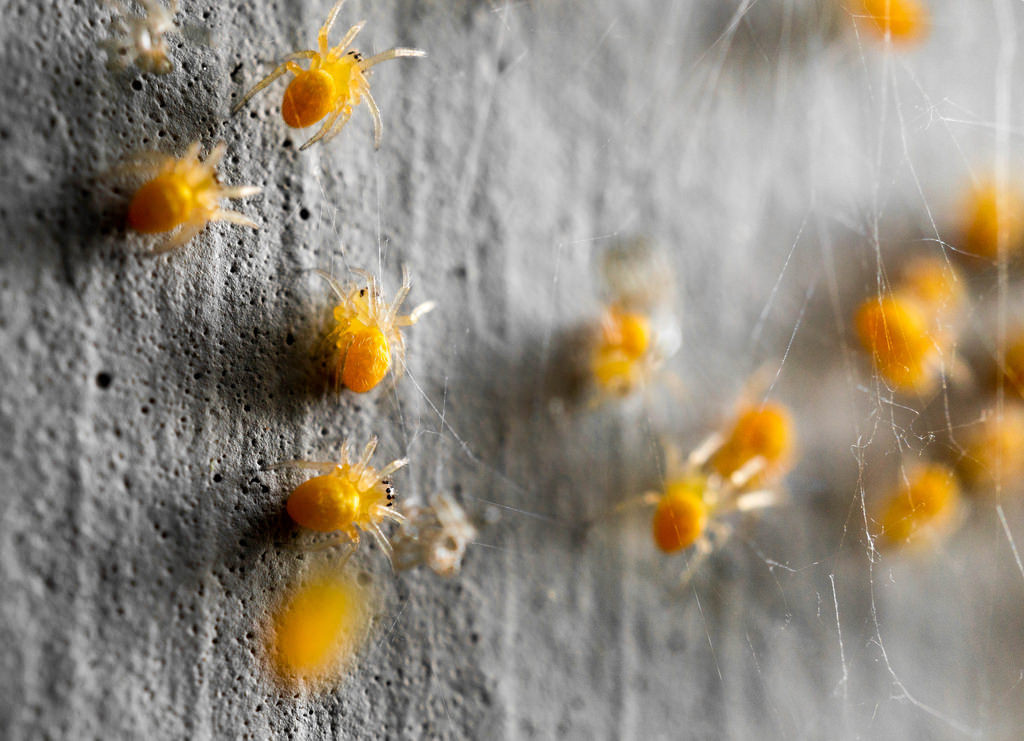
If you are looking for a bit harrier orange spider you may be looking at the cross orb weaver (Araneus diadematus), which also seems to suddenly appear around the same time as the marbled orb weaver. It also has similar prey and habitat preferences.
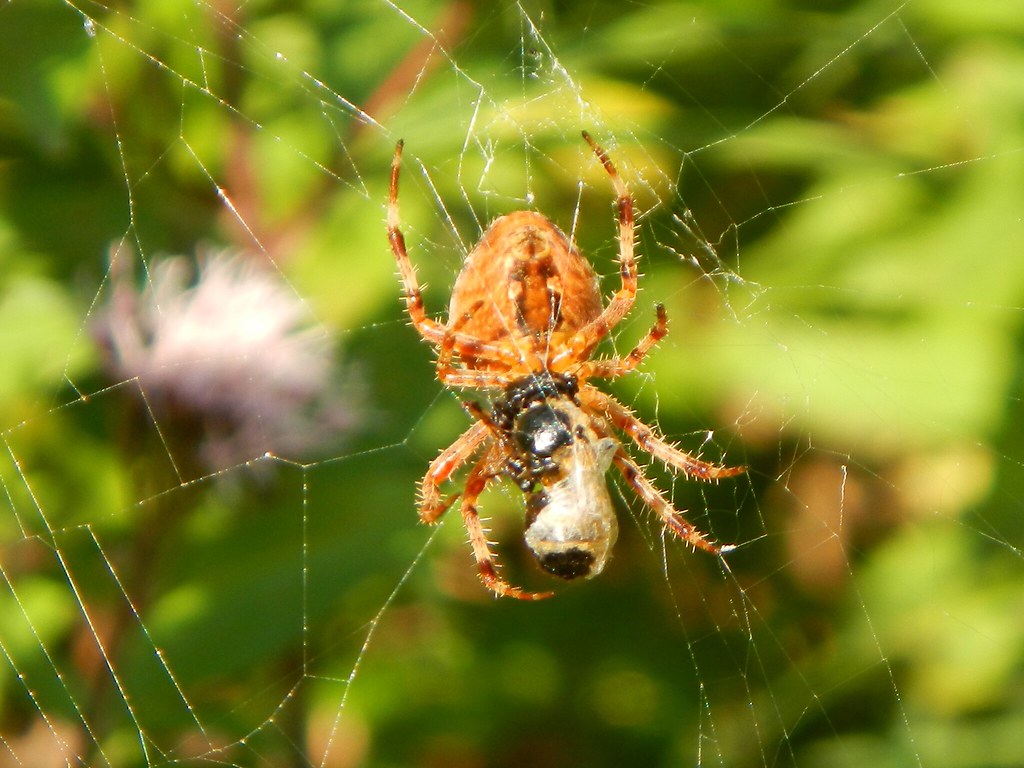

So, what is that orange spider you see, with candy-corn colored legs and a bright orange and black rump? It's the marbled orb weaver (or the cross orb weaver), the harbinger of fall and a "spooky" but very useful ecological friend to have around, eating insects and helping keep your house and garden free of pesky bugs.
If you want a good children's book you can read more about orb weavers in the book by Alice McGinty.

